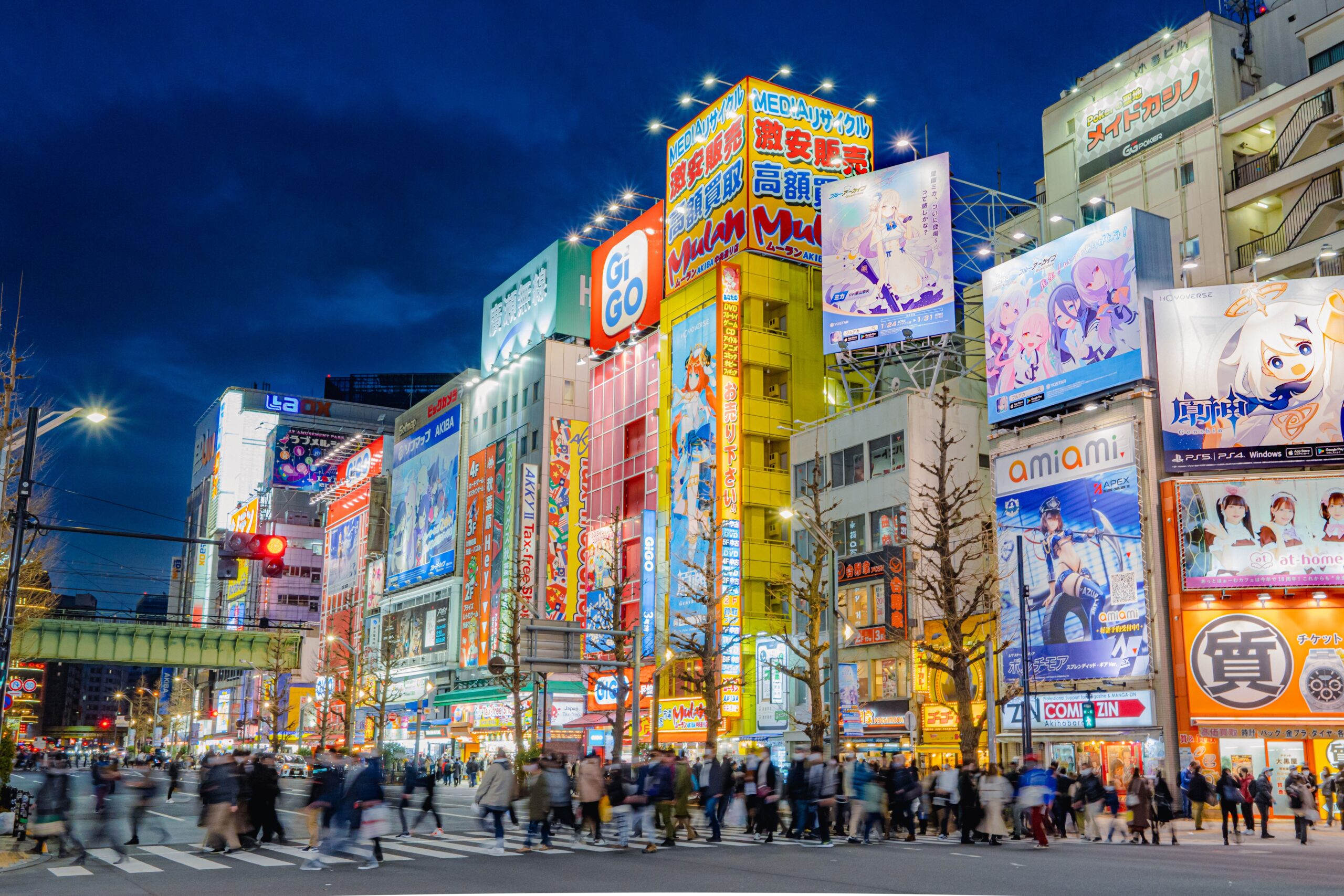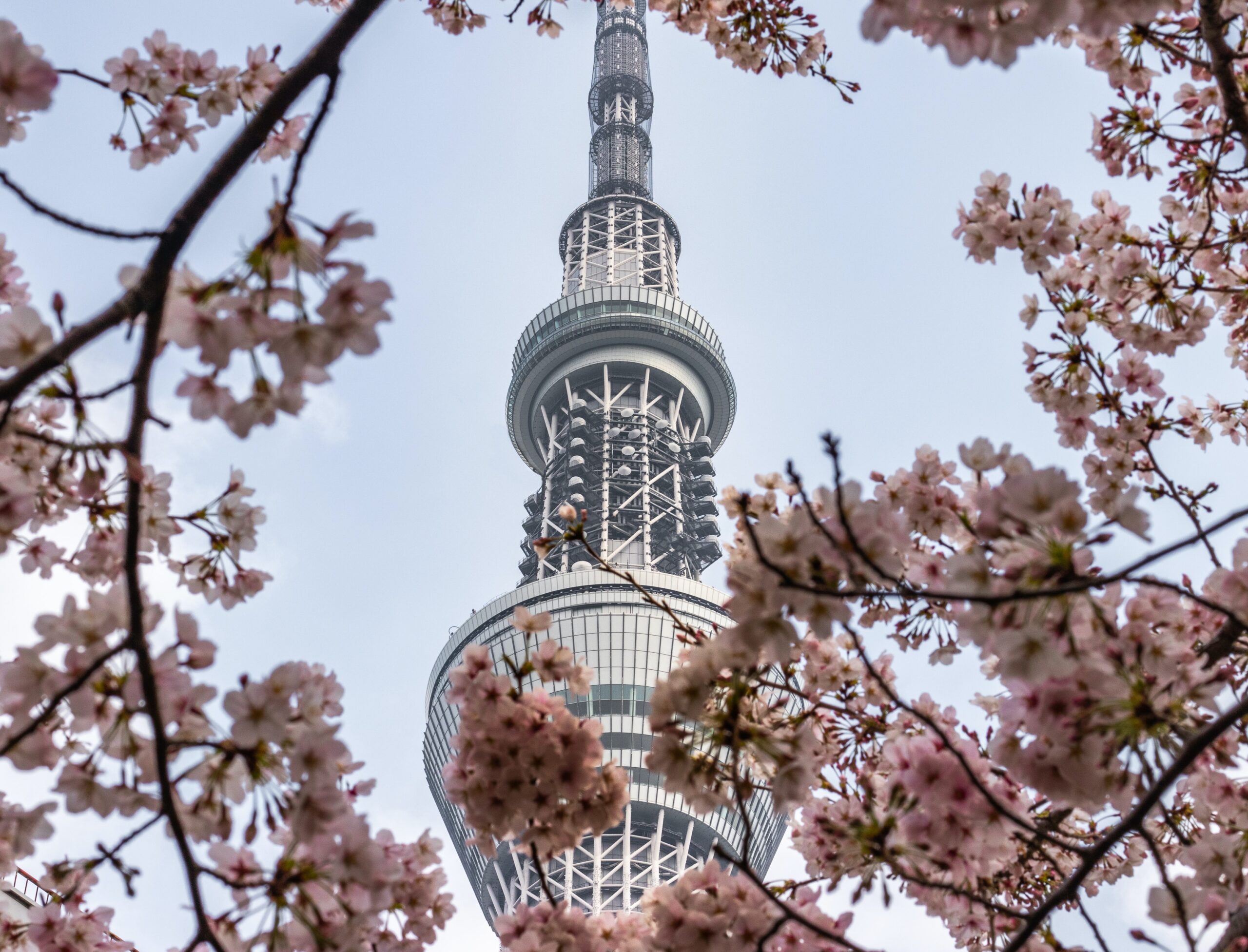Welcome to Tokyo, a sprawling metropolis that elegantly weaves centuries of history with cutting-edge innovation. As Japan’s capital city, Tokyo is a vibrant hub that offers an endless array of unforgettable experiences. From the bustling, neon-lit streets thronged with people to tranquil temples and gardens that offer a peaceful retreat, Tokyo is a city that never ceases to amaze.
In this article, we will navigate through this sprawling city to bring you the top 5 must-see tourist spots in Tokyo. These iconic locations have been carefully selected to give you a taste of Tokyo’s diverse attractions. They range from the electrifying Akihabara district, a paradise for tech-savvy and anime lovers, to the serene Meiji Shrine that stands as a testament to Tokyo’s rich history.
Whether you’re a first-time traveler looking for the city’s highlights or a seasoned visitor seeking to experience Tokyo’s depth, this guide will help you uncover the city’s treasures. So, prepare yourself to embark on an unforgettable journey through the dynamic cityscape of Tokyo, as we reveal the must-see spots that capture its unique blend of tradition and modernity. Let’s dive in!
- Akihabara: Known as the hub for otaku culture, Akihabara is a vibrant district filled with electronic shops, video game arcades, manga and anime stores. This area is also known for its themed cafes, like the maid cafes and the Gundam Cafe. For fans of anime, manga, or Japanese pop culture in general, Akihabara is a must-visit destination.
- Senso-ji Temple: Located in Asakusa, Senso-ji is Tokyo’s oldest Buddhist temple. The temple grounds are home to various shops, food stalls, and the iconic Kaminarimon (Thunder Gate) that features a massive paper lantern painted in vivid red-and-black tones to suggest thunderclouds and lightning.
- Meiji Shrine: Set within a lush, tranquil forest in the heart of bustling Tokyo, Meiji Shrine is a Shinto shrine dedicated to the spirits of Emperor Meiji and his wife, Empress Shōken. The Shrine’s traditional architecture and serene atmosphere provide a welcome escape from the city’s fast pace.
- Shibuya Crossing: Famous for being one of the busiest intersections in the world, Shibuya Crossing is a must-visit, especially at dusk. The organized chaos of the crossing, paired with the illuminated billboards, is a sight to behold. Don’t forget to visit the nearby Hachiko statue, a tribute to Japan’s most loyal dog.
- Tokyo Skytree: Towering above the city at 634 meters, Tokyo Skytree is the tallest structure in Japan and offers incredible panoramic views of Tokyo. Visit the two observation decks, and on clear days, you might even catch a glimpse of Mount Fuji in the distance.

Step into Akihabara, a Tokyo Wonderland: Your Gateway to Otaku Culture
Picture this – you’re meandering through the heart of Tokyo, when suddenly you stumble upon a neighbourhood unlike any other. A colourful riot of anime posters, manga shops, and video game arcades spring to life in front of you. Welcome, my friend, to Akihabara, or as the locals affectionately call it, “Akiba”. Bursting with all things otaku culture, it’s a tantalizing Tokyo treat that you simply can’t miss.
The Birth and Evolution of an Otaku Paradise
You might be tempted to believe that Akihabara was always this otaku wonderland. However, the reality is, like a manga plot twist, that much more intriguing. Post-World War II, Akihabara was primarily known as a buzzing shopping district for electronic goods. But as the ’80s rolled in, and the personal computer started to take the world by storm, Akihabara began to embrace a new identity. The electronics shops made way for manga, anime, and video game stores, drawing in a fresh crowd, the otaku, forever changing the face of this vibrant district.
Living the Otaku Dream in Akihabara
In Japan, otaku refers to those with a deep, almost obsessive passion for anime, manga, and the like. And it is this ardent subculture that’s painted Akihabara in its uniquely colourful hues. Each year, millions of otaku pilgrims – both local and from far-off shores – descend upon this Tokyo gem to revel in its pulsating, electric vibes.
Wandering down Akihabara’s streets is like diving headfirst into a rainbow-coloured ocean of anime and manga. Shops are crammed with collectables and merchandise, while arcades teem with enthusiastic gamers and purikura (photo sticker booth) aficionados. It’s not just a sight to behold, it’s a full-blown sensory feast!
Akihabara’s Global Charm
Akihabara’s allure isn’t confined to Japan. Its vibrant cityscape has graced countless anime series, films, and music videos, making it a global symbol of otaku culture. If you’ve ever seen “Steins;Gate” or “Akiba’s Trip”, you’ve already caught a glimpse of Akihabara’s iconic appeal.
Cosplay Capers and Maid Café Magic
But wait, there’s more! Akihabara also serves as a stage for cosplay enthusiasts, where they transform into their favourite anime or game characters, adding another splash of colour to the district. And let’s not forget about Akihabara’s one-of-a-kind dining experience – the infamous maid cafés. In these delightful establishments, like the much-loved @home café, waitresses dressed in maid costumes cater to customers as “masters” or “mistresses”, offering a playful peek into the quirkier side of Japanese pop culture.
In short, Akihabara is your passport to a world brimming with vivacity, eccentricity, and a dash of the whimsical. Whether you’re an anime aficionado, a gaming geek, or just a curious wanderer, Akihabara promises to bewitch and bedazzle, making it an unmissable chapter in your Tokyo adventure.

Unearthing Tokyo’s Soul: A Stroll Through Time at Senso-ji Temple
In the heart of Tokyo’s bustling Asakusa district lies a gem that has been capturing hearts since the 7th century – the timeless Senso-ji Temple. Tucked away from the city’s neon-lit skyscrapers, this temple is the epitome of a paradox. It’s a charming reminder of Tokyo’s ability to cradle its rich past while racing towards a future that’s as bright as the lights of the nearby Tokyo Skytree. It’s here where tradition whispers tales of yesteryears and the future hums with promises of tomorrow.
The Lore of Senso-ji: A Story Etched in Time
Winding back the clock to 628 AD, we unearth a tale as old as the city itself. Picture this: two humble brothers fishing in the tranquil Sumida River find a statue of Kannon, the goddess of mercy. Despite returning it to the river’s gentle currents, the statue mysteriously finds its way back to them. This divine intervention led to the construction of Senso-ji nearby, a tribute to Kannon. Completed in 645, it proudly stands as Tokyo’s most ancient temple, steeped in lore and drenched in history.
A Journey Through Tradition: From Thunder Gate to Tokyo Skytree
Your journey begins at the iconic Kaminarimon or Thunder Gate, the temple’s proud sentinel. A stroll down the 200-meter-long Nakamise shopping street connects you to the temple’s second gate, the Hozomon. As the aroma of traditional local snacks wafts through the air, the street brims with vibrant yukatas and folding fans, each a canvas of Japanese artistry.
At the end of the path, the temple awaits, an oasis of tranquillity amidst Tokyo’s energetic rhythm. At night, the temple transforms into a radiant spectacle, the five-story pagoda, and main hall aglow with soft light. A mere 20-minute walk from this sanctuary of serenity stands the colossal Tokyo Skytree. A striking contrast, indeed, serving as a potent symbol of Tokyo’s seamless fusion of antiquity and innovation.
Sanja Matsuri: A Symphony of Celebration
But Senso-ji is more than just a monument of history and architecture. It’s the pulsating heart of Tokyo’s grandest matsuri – the Sanja Matsuri. As the third weekend of May unfurls, the usually calm Asakusa streets spring to life. An infectious energy sweeps through the district as locals shoulder mikoshi, or portable shrines, in a vibrant procession. Traditional music fills the air, and dance performances paint the streets in dynamic hues. An exhilarating spectacle, this festival draws in a crowd of about 1.5 million, as if the entire city comes to celebrate its rich past.
All in all, a trip to Senso-ji is akin to turning the pages of Tokyo’s grand narrative. From its serene environment to the bustling shopping streets and the towering Tokyo Skytree, every corner tells a tale. It’s a place where you don’t just see Tokyo, you feel it. A must-visit, indeed, for anyone seeking to drink in the true essence of this city.

Immerse Yourself in Tokyo’s Serene Heart: The Meiji Shrine
Imagine, if you will, standing amidst the pulsating energy of Tokyo, the city that never seems to sleep. Then, in the blink of an eye, you cross a threshold, swapping the city’s relentless energy for the soothing whispers of nature and echoes of history. Welcome to the Meiji Shrine. This remarkable oasis in Tokyo’s urban jungle, dedicated to the spirits of Emperor Meiji and Empress Shōken, is a testament to the harmony between the traditional and the contemporary, the serene and the lively. A trip to Tokyo without paying homage here? Unthinkable!
The Meiji Shrine: A Grand Monument to a Historic Legacy
Step back in time to 1920 as you traverse the sacred grounds of the Meiji Shrine, constructed eight years after Emperor Meiji bid the world adieu and six years after Empress Shōken followed suit. Emperor Meiji, the harbinger of modern Japan, steered the nation from feudalism to an assertive, capitalist state during the Meiji Restoration. Today, the shrine serves not only as a tranquil place of worship but as a lasting tribute to an emperor and empress who forever altered Japan’s trajectory.
A Verdant Haven Amidst Urban Chaos
Tucked away in a sprawling 70-hectare evergreen woodland, the shrine houses a breathtaking array of over 120,000 trees, representing 365 species. These trees, graciously donated from across Japan, create a serene pathway leading to the shrine’s heart. As you meander through this tranquil labyrinth, the city’s clamour fades, replaced by the harmonious symphony of nature. It’s hard to believe that this haven of tranquillity exists in the midst of Tokyo’s constant whirl.
A Stone’s Throw Away: Yoyogi Park and Harajuku
Adjacent to this serene oasis lies Yoyogi Park, one of Tokyo’s green lungs, perfect for a lazy picnic, a thoughtful stroll, or even to marvel at the ethereal beauty of cherry blossoms during spring.
Yet, a few steps from the shrine and park’s tranquillity, you’ll stumble upon the vibrant cacophony of Harajuku, the beating heart of Japanese youth culture and fashion. Here, the trendsetting Takeshita Dori awaits, lined with cutting-edge fashion boutiques, crepe stands, and a myriad of fast-food joints catering to the city’s trend-conscious teens. This intriguing juxtaposition of the sacred, the serene, and the avant-garde encapsulates the true essence of Tokyo.
So, why should the Meiji Shrine be etched in your Tokyo itinerary? Simply because it offers you a rare glimpse into Tokyo’s soul – a fascinating blend of history, culture, tranquillity, and dynamism. It’s a taste of Tokyo’s multifaceted personality, certain to leave you enchanted and yearning for more.
.
Bask in the Heartbeat of Tokyo: Shibuya Crossing, A Whirlwind of Neon & Nostalgia
If the vibrant city of Tokyo were a living, breathing entity, its pulsating heart would most assuredly be Shibuya Crossing. It’s more than just a spot on the tourist trail – it’s an emblem of Tokyo’s restless spirit, a rhythmic dance of human hustle, and a tribute to the city’s precise, well-oiled orderliness.
Feel the Rush of the Scramble
Imagine this: every few minutes, as the traffic lights blush a fiery red, an orchestra of footsteps echoes through the air. From all corners of the intersection, a tidal wave of humanity surges forth, creating a ballet of organized chaos. This perfectly choreographed spectacle, set against a kaleidoscope of glowing neon and mammoth video screens, is something that sears itself into your memory.
This dizzying intersection, affectionately dubbed “The Scramble,” has strutted its stuff on the silver screen, boogied in music videos, and even cameoed in video games. It’s a pop-culture rockstar in its own right.
For those dipping their toes into Tokyo for the first time, navigating the Shibuya intersection is a rite of passage. And if you’re craving a bird’s eye view of this human whirlpool, make your way to the Shibuya Sky observation deck or snag a coveted window seat at the Starbucks nestled in the QFRONT building, a stone’s throw away from the station.
Unravel the Stories Beyond the Crossing
Take a leisurely stroll away from the bustling crossing, and you’ll find a heartwarming symbol of loyalty in the form of Hachiko, a faithful dog cast in bronze. This unassuming statue is a beloved rendezvous spot and embodies the spirit of devotion in Japanese culture.
Peel back the layers of Shibuya, and you’ll discover a neighbourhood that refuses to sleep. With its pulsating nightlife and retail therapy on tap, Shibuya is a playground for the nocturnal and shopaholics alike. It boasts the renowned Shibuya 109 department store, a mecca for fashionistas, and a smorgasbord of eateries and bars.
Shibuya Crossing: A Dazzling Nighttime Spectacle
As the sun bids adieu and nightfall drapes the city, Shibuya Crossing dons a new avatar. Bathed in the glow of neon signs, the intersection morphs into a hypnotic tableau of Tokyo’s contemporary side.
To wrap things up, Shibuya Crossing is more than a pedestrian intersection. It’s a snapshot of Tokyo’s relentless dynamism and an absolute must for any wanderer in the city. Whether you’re part of the teeming masses or a spectator savouring the view from above, the Shibuya Crossing experience is a Tokyo tale you simply must write into your travel diary.

Tokyo Skytree: Soaring High Above the City’s Skyline
When you find yourself wandering the bustling streets of Tokyo, it’s hard to miss the mesmerizing spectacle that is the Tokyo Skytree. With its head in the clouds, this colossal structure has an ethereal presence that commands attention. And why wouldn’t it? After all, it’s not just the tallest tower on the globe but also the second loftiest human-made edifice, standing proud at a staggering 634 meters. It’s as if it’s stretching its arms, yearning to touch the heavens, while offering us mortals a breathtaking glimpse of Tokyo’s sprawling landscape.
A Peek Into the Past: The Tale of the Tower
In May 2012, the Tokyo Skytree opened its doors, or rather, its elevators, to the world. In no time, it etched its name in the hearts of locals and tourists alike. But did you know the tower’s height wasn’t a whimsical decision? It’s a little tip of the hat to Tokyo’s ancient moniker, “Musashi”. Ingeniously, the term can be deciphered as 6 (mu), 3 (sa), 4 (shi) in the local tongue, perfectly reflecting the Skytree’s stature.
The Skytree is a beautiful blend of past and present – a contemporary nod to Japan’s architectural legacy. The design marries the elegance of a 5-story pagoda, reminiscent of Japan’s historic temples, with the fluidity of a “sori” (curve) and a “mukuri” (incline). It’s as though the tower whispers stories of bygone eras while embracing the rhythm of modernity.
The Sky-High Serenade: Gazing Down From the Clouds
The Tokyo Skytree boasts two observation decks, each offering a unique, awe-inspiring experience. The first, affectionately known as the Tembo Deck, is perched 350 meters above the ground. From here, you can drink in a 360-degree panorama of Tokyo that will leave you spellbound. And if the skies are clear, you’ll be lucky enough to catch a glimpse of the majestic Mount Fuji, standing tall in the distance.
The second deck, the Tembo Galleria, sits even higher at 450 meters. It’s here that you truly feel like you’re treading on clouds. Its “Skywalk” is a spiraling ramp that offers a shifting vista as you ascend towards the summit. It’s like a celestial dance, a waltz with the clouds.
The Skytree’s Symphony: More Than Just a Tower
Nestled in Sumida City ward, a stone’s throw away from Asakusa, the Tokyo Skytree isn’t just a tower; it’s the heart of a pulsating metropolis. The Skytree Town that encircles the tower is a shopper’s paradise and a foodie’s dream, teeming with boutiques, restaurants, an aquarium, and even a planetarium. It’s a testament to Tokyo’s spirited blend of traditional and contemporary cultures.
The Skytree is readily accessible from central Tokyo, a short stroll from Tokyo Skytree Station on the Tobu Skytree Line or Oshiage (Skytree) Station on the Asakusa Subway Line.
In the grand scheme of things, the Tokyo Skytree is more than just a tower offering a bird’s-eye view of the city. It’s a symbol of Tokyo’s harmonious fusion of the old and the new, an experience that goes beyond sightseeing. It’s a melody in the city’s symphony, a testament to its timeless charm, and an absolute must for anyone who seeks to truly understand the heartbeat of Tokyo.


